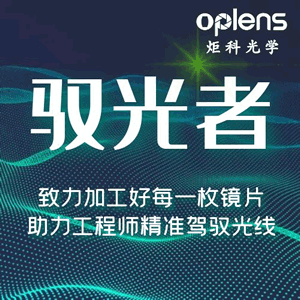科學家研制出廉價石墨烯海綿傳感器
近日,美國《大眾科學》網站報道,美國倫斯勒理工學院的科學家最新研制出了一款纖巧、便宜且能重復使用的新式傳感器,其由石墨烯泡沫制成,性能遠超現在市面上的商用氣體傳感器,而且,在不遠的未來,科學家們能在此基礎上研制出更優(yōu)異的炸 彈探測器和環(huán)境傳感器。
新傳感器摒棄了阻止傳感器應用和發(fā)展的諸多限制。最近幾年,在操作納米結構并用其制造性能卓越的探測器以精確追蹤空氣中的化學物質方面,科學家們已經取得了重大的進步,然而,他們研制出的各式各樣的傳感器,盡管從理論上而言很好,但卻并不實用。 目前傳感器的設計都非常復雜,常常依賴單個納米結構,而且,科學家們需要對這樣的結構進行仔細操作以及更加精確的分析。另外,制造出的傳感器往往不能重復使用,且必須在特定的溫度或壓力下才能工作,因此,科學家們一直沒有制造出一款可靠、便宜且可以重復使用的手持傳感設備。 現在,倫斯勒理工學院的科學家們使用石墨烯泡沫研制出了這種郵票大小的新型傳感器。他們將石墨烯,即單層碳原子,種植在泡沫鎳結構上,隨后移除泡沫鎳,留下一個類似泡沫的石墨烯結構,其具有獨特的電性,能夠用于執(zhí)行傳感任務。 當將其暴露于空氣中時,空氣中的粒子會被吸收到泡沫表面,而且每個這樣的粒子會用不同的方式影響石墨烯泡沫,對其電阻進行微小的改動。讓電流通過其中并且測量電阻的變化,就能知道泡沫上依附的是什么粒子。科學家們讓大約100毫安的電流通過該泡沫,結果發(fā)現,這種石墨烯泡沫能夠導致粒子解吸,也就是說,粒子自動從傳感器上剝落下來,清除這些粒子,傳感器就可以重復使用了。 科學家們對傳感器進行了微調,讓其來探測氨水(自制爆 炸物硝酸氨的關鍵成分),該石墨烯泡沫傳感器在5分鐘到10分鐘內就設法探測到了這種富有攻擊性的粒子,而且效率是現有市面上最好探測器的10倍。科學家們接著用其來探測有毒 氣體二氧化氮(爆 炸物分解的時候也會釋放出這種氣體),結果表明,其效率也是目前商用傳感器的10倍。 石墨烯泡沫非常容易處理且操作簡單,而且在室溫下也能很好地工作,這都是科學家們非常心儀的特質,該石墨烯泡沫傳感器可讓科學家們更快制造出更便宜實用的手持傳感設備來對大氣進行探測。 |
最新評論

-
titanlizard 2011-11-29 19:44來學習了啊

-
ascs5566 2011-11-29 20:51學習!搞起~~

-
quanliwei 2011-11-29 21:23很霸道

-
kerwin 2011-11-29 21:25學習下……謝謝了

-
GGJ312 2011-11-29 21:59路過看看

-
mang2004 2011-11-30 00:11加強學習。多謝分享。
上原文過過癮。
Using Graphene Foam to Detect Gases RPI
Nanotechnology as a discipline is bleeding-edge cool, but so often we hear more about its amazing potential than its practical application. So it’s always refreshing to catch wind of a story like this: Researchers at Rensselaer Polytechnic Institute in New York have developed and demonstrated a small, relatively inexpensive, and reusable sensor made of graphene foam that far outperforms commercial gas sensors on the market today and could lead to better explosives detectors and environmental sensors in the very near future.
The new sensor dispenses with a lot of the limitations that have been holding back sensors in this space. In the last several years, many strides have been made in the science of manipulating nanostructures to be excellent detectors of very fine trace elements of chemicals on the air. But these sensors, while great in theory, are impractical in actual service.
Current sensor designs are complex, often relying on an individual nanostructure that must be carefully manipulated and even more carefully analyzed. They are often not reusable and must be deployed at specific temperatures or pressures, making a handheld sensor device unreliable, very expensive, and impossible to use repeatedly.
Enter graphene foam. The new postage-stamp-sized sensor developed at RPI involves growing graphene--one-atom-thick layers of carbon--on a structure of nickel foam. Removing that nickel foam leaves behind a structure of foam-like graphene with unique electrical properties that can be tuned to the task of sensing.
When exposed to air, particles adsorb to the foam’s surface. And each of these particles affects the graphene foam in a different way, slightly modifying its electrical resistance. Run a current through it, and a measurement of the change in resistance tells a you what’s sticking to the foam. Moreover, by running a roughy 100-milliampere current through the foam the RPI team found they could cause the particles to desorb--that is, they unattached themselves from the sensor, cleansing it so it can be used again and again.
Tweaked to detect ammonia (a key ingredient in homemade explosive ammonium nitrate--think: fertilizer bombs), the graphene foam sensor managed to detect the offending particle at just 1,000 parts-per-million in just five-to-10 minutes--making it ten times more effective than the best detectors on the market today. A second demo involving nitrogen dioxide (another trace element given off by explosives as they degrade) showed nearly identical results--effective at 100 parts-per-million, or ten times better than current commercial sensors.
Given that graphene foam is fairly easy to handle and manipulate given its larger size and room-temperature-ready performance, that’s pretty remarkable. It also drastically lowers the barrier to a practical handheld devices for atmospheric sensing.

-
知日月 2011-12-05 10:55石墨烯泡沫。。。很抽象。。。

-
10000高偉 2011-12-06 22:31傳感器很重要,且極其具有發(fā)展前景!




